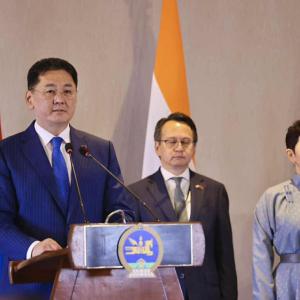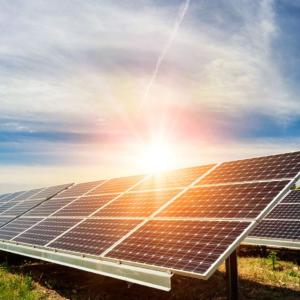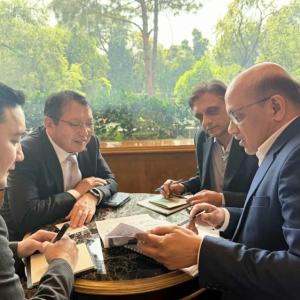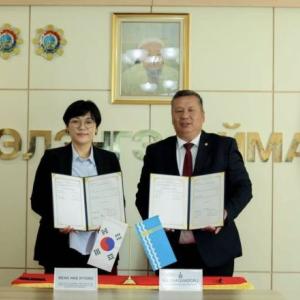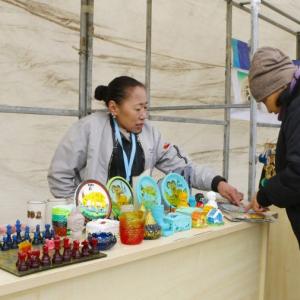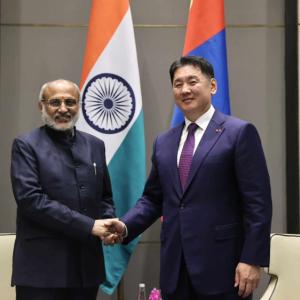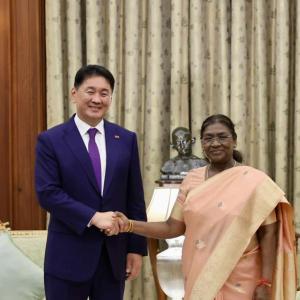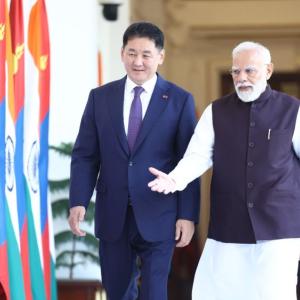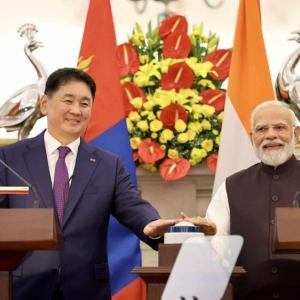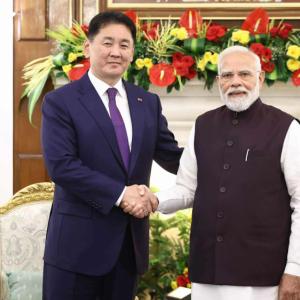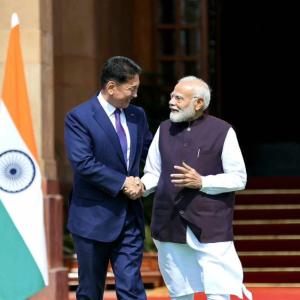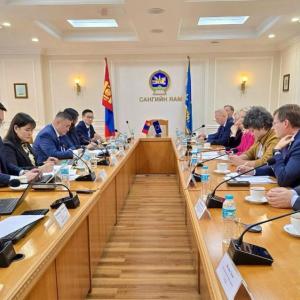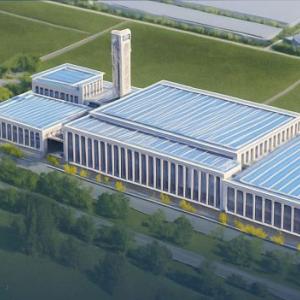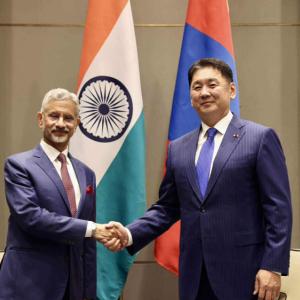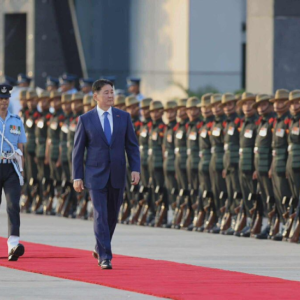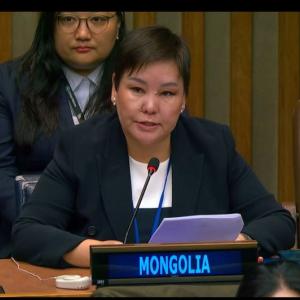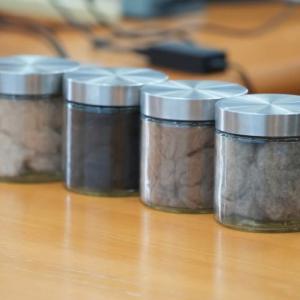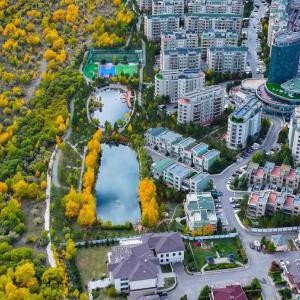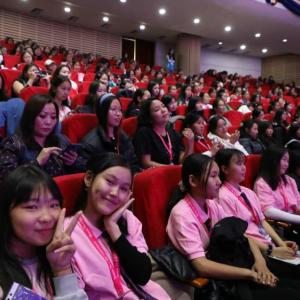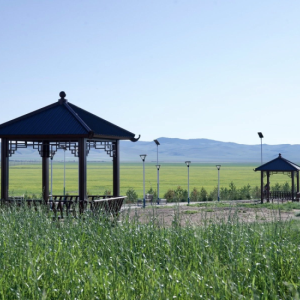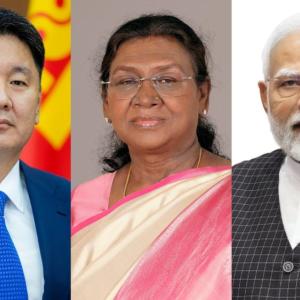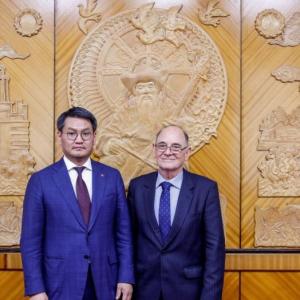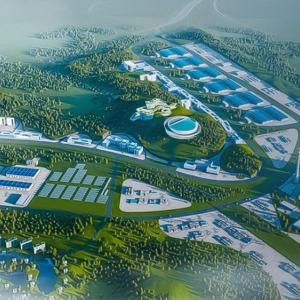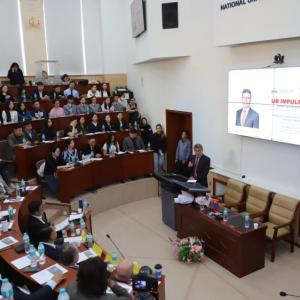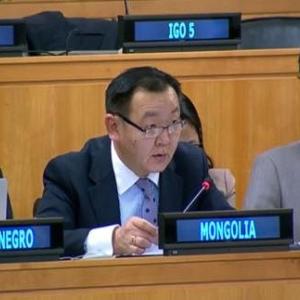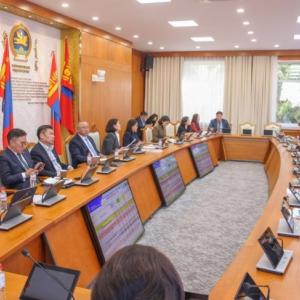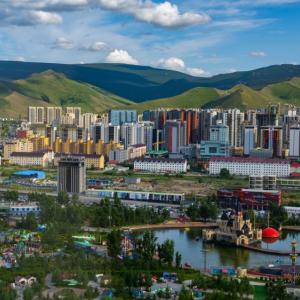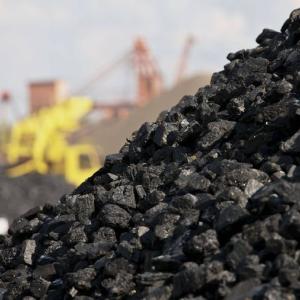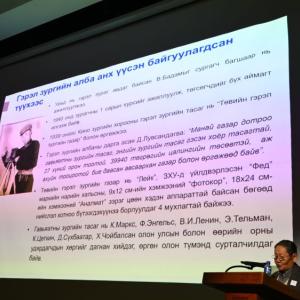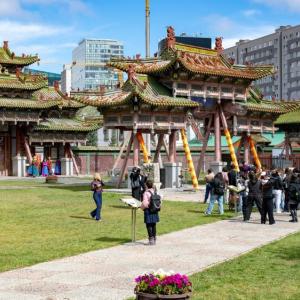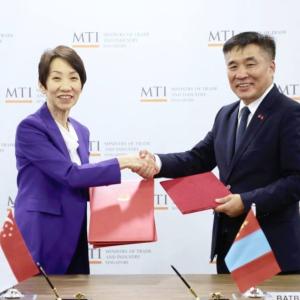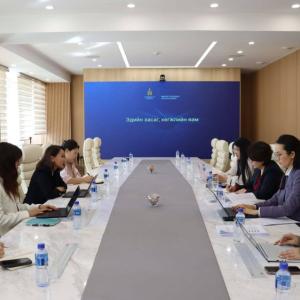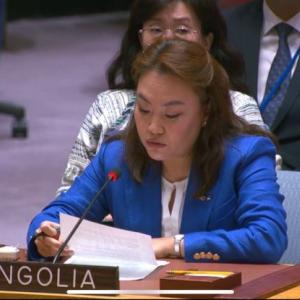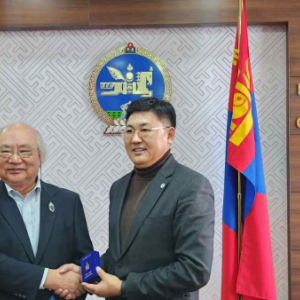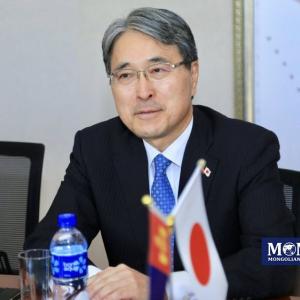First Largest Solar Power Plants in Remote Areas
Economy
Ulaanbaatar, September 1, 2023 /MONTSAME/. The first-ever largest solar power plant in a remote area of Mongolia is under construction to be completed in December 2023. It is a 10MW Solar power plant in Murun soum of Khuvsgul aimag, the northern province of Mongolia.
The Murun 10MW Solar Power Plant is a subproject of the Upscaling
Renewable Energy Sector Project being implemented with a grant of USD 14.6
million from the Strategic Climate Fund, USD 6 million from Japan Fund for the
Joint Crediting Mechanism, and a loan of USD 40 million from the Asian Development
Bank (ADB).
The Project will develop 41.0 megawatts (MW) of solar, wind, and shallow-ground renewable energy in remote areas of the Western and Altai Uliastai Energy Systems. The Sector Project selected western aimags as the remote western region, where 30 percent of the total population resides, has not been connected to the central grid yet even though the energy need of the region increases by 10 percent every year and livelihood is considered lower than of central provinces, one of the causes of lacking investment.
Therefore, within the Upscaling Renewable Energy Sector
Project, the following core subprojects are planned to be implemented.
Wind subproject: A wind power plant in the western region of Mongolia. 2) Uliastai subproject: A 5 MW solar power plant in Aldarkhaan and Uliastai soums of Zavkhan aimag, and a 3.6 MWh battery energy storage system (BESS) at the Uliastai substation. 3) Gobi Altai subproject: A 10 MW solar power plant in Yesonbulag soum. 4) Altai Soum subproject: An off-grid 0.5 MW hybrid solar and BESS facility in Altai soum. 5) Khovd subproject: A 135 kW shallow-ground heat pump (SGHP) at Kindergarten 1 in Khovd City.
In addition to these, shallow ground heat pump projects are under progress in 5 soums, namely Uliastai, Altai, Ulaangom, Ulziit and Jargalant soums of Zavkhan, Gobi-Altai, Uvs, Bayankhongor and Khovd aimags. The Project is being implemented over two phases, with the first phase from 2019-2022 and the second from 2022-2024.
Newly appointed ADB Country
Director for Mongolia Shannon Cowlin, accompanied by relevant officials of the
projects, under implementation in Khuvsgul aimag and a press group, visited the
sites in late August to oversee the projects’ implementation.
The construction of the 10 MW solar PV farm is in full swing at the site of the Murun 10MW Solar Power Plant Project, installing all the 23192 pieces of solar PVs, competing against time as cold days are coming to stop outside work. The solar panels which have 21.8 percent efficiency are produced by LONGi, the world's leading supplier of solar PV solutions.
The subproject contract has been awarded to Xian Electric
Engineering Co.,LTD and the contractor had worked on developing design drawings and
installation of PVs is progressing with around 90 percent performance, working
together with subcontractor Smart Plus company of Mongolia. Smart Plus, an
experienced company that also has installed PVs for a 10MW solar power plant in
Myangad soum of Khovd aimag is using installing machines and a special screw machine for drilling rocky earth, shortening the time to
install the required strings (52 PVs on 1 string).
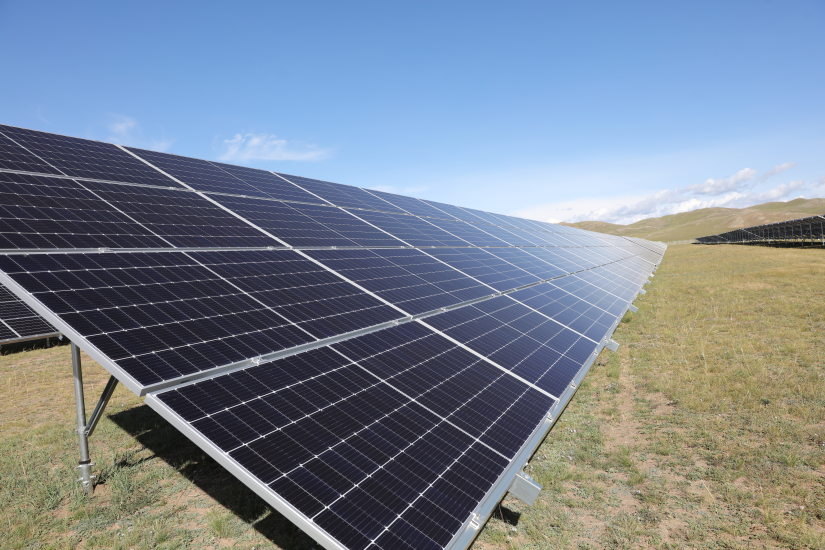
The Murun solar power plant will be connected to the central power grid through the existing Murun substation, which is also planned to be extended within the subproject. Advisor of the project Professor Enebish Namjil said “The PV installation and other works are progressing successfully ensuring the completion in time. Murun soum has not had a reliable energy source so far. This project will enable the soum to have an independent energy source that fully provides not only the whole energy needs of the soum but also supplies energy to the central grid system of Mongolia, decreasing the load by 68 to 75 percent. The project will be an example for others as a solar power plant is built in the area with extreme weather, one of the coldest provinces of Mongolia.” Professor Enebish worked as an administrator for the Darkhan Solar Plant Project (10MW) which commissioned its full operations on January 19, 2017.
Mongolia’s total electricity consumption is roughly 1GW and it is increasing year by year. Nearly 90 percent of this demand is met by the centralized energy system which means 800-900 MW, though the renewable energy source has been increasing in recent years.
While Mongolia can be ranked
5th in the world with its underground mineral
resources, it can top the globe with its capacity to utilize renewable
energy. The Mongolian Gobi is advantageous as it is studied more closely
compared to other deserts such as the Sahara and Arizona. Starting
in 1999, Mongolian scholars teamed up with international experts and studied the feasibilities of the Gobi for utilization of renewable energy and even came up
with technological solutions to exploit the great resources.
The studies have proven that mega plants with 10-100 times larger capacities than the total energy consumption of Mongolia can be built in the Gobi, excluding other areas. “ Mongolia has nothing to lose because such plants only require a minuscule part of the vast Gobi region. The land will not be dug or depraved in any way; it will only be used for its sunlight and wind. Mongolia will benefit from the high-tech and possibility of exporting the excess energy that's produced. Only the tax revenue of such amount of renewable energy exports will be enough to increase Mongolia’s GDP several times,” noted Professor Enebish in his interview.
The Murun Solar Power Plant is unique in Mongolia not only with its capacity of 10MW, the first largest solar plant in the remote areas, but also with its coverage of small areas (30 ha) compared with its capacity, saving water usage of 148 thousand tons, and using new simpler technique in the installation of PVs.
The Solar Power Plant, which is expected to last 25 years will produce electricity of 15500 thousand KW/h annually, providing 21600 households with permanent electricity. The Upscaling Renewable Energy Sector Project is anticipated to support the distributed renewable energy systems in remote and less developed regions in Mongolia; and enhance the capacity of local public utilities in investment planning, project management, and grid control for sustainable renewable energy upscaling in the targeted region. Upon successful completion, the Project delivers, most importantly, clean electricity to 70,000 households while annually avoiding 82,789 tons of carbon dioxide emission. Performance indicators were evaluated on the construction readiness and the effectiveness of environmental management for the proposed construction of the 10 MW solar PV farm in Moron soum, Khuvsgul Aimag. Environmental Monitoring is conducted on every subproject constantly. The impact will be imported electricity reduced and energy security improved. The outcome also will be renewable energy supply in Mongolia increased.

 Ulaanbaatar
Ulaanbaatar





